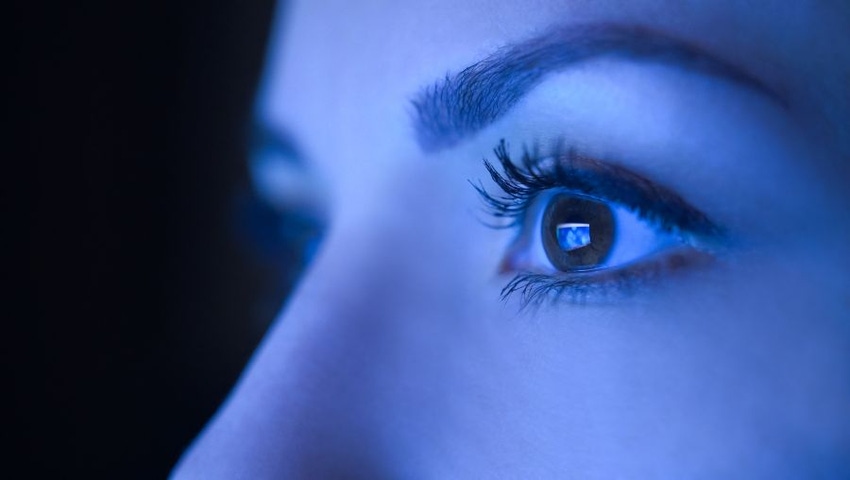Recent research uncovered a new side to macular carotenoids, which makes them more multidimensional than previously thought.

Lutein and zeaxanthin isomers (RR-zeaxanthin and RS [meso]-zeaxanthin) are collectively known as the macular carotenoids, and have risen to prominence on the back of more than 20 years of eye research conducted in eye health. More recently, however, research uncovered a new side to these macular carotenoids, which makes them more multidimensional than previously thought.
Lutein and the two zeaxanthin isomers are the only three carotenoids found in the eye, specifically in the macula, which is the area of the retina responsible for the highest visual acuity. It is also the area susceptible to the greatest amount of photo-oxidative damage. The location of their respective areas of deposition is highly specific: Lutein is preferentially deposited in the peripheral macula, RR-zeaxanthin in the mid-peripheral macula and RS-zeaxanthin in the center of the macula (Exp Eye Res. 1997;64:211-218).
Increased dietary intake of lutein and zeaxanthin is associated with increased macular pigment optical density (MPOD), which is otherwise known as the thickness or density of the protective layer of carotenoids in the macula. Epidemiological studies have reported an inverse association between dietary intake of lutein and zeaxanthin and the risk of developing age-related ocular diseases such as age-related macular degeneration (AMD) and cataracts (Nutr Res Rev. 2007;20:163-79).
The rationale for higher intake of macular carotenoids makes sense. According to the American Optometric Association, the human body does not make the lutein and zeaxanthin it needs, so it needs to come from the diet. Some of the dietary sources of lutein include green leafy vegetables like kale and spinach, as well as other foods such as egg yolks.
Unfortunately, macular carotenoids suffer from the same dilemma faced by omega-3s (eicosapentaenoic acid [EPA] and docosahexaenoic acid [DHA]) in that many of the dietary sources are not hugely popular among consumers, and most people who are eating these foods are not getting close to beneficial amounts. Another hurdle has been the awareness “age gap.” Although lutein and zeaxanthin has been a mainstay of eye health supplements, it has been traditionally associated with infants and seniors. However, because the effects of the macular carotenoids seem to be cumulative, the gap between their extremes needs to be closed. Enter the modern, digital age and the need to take a new look at eye health.
Into the blue
In recent times, researchers have taken a new look at macular carotenoids and their effect against blue light. In theory, this makes sense since the macular pigment plays such a big role in blocking harmful blue light. Blue light is a component of visible light and surrounds us; sources include sunlight, LED lighting and digital devices.
Because most people in developed countries lead “digital lifestyles,” they are exposing themselves to a significant amount of high-energy blue light. And all ages groups are at risk of higher blue light exposure. Consider these statistics:
· Eighty-eight percent of American adults have a smart phone, 57 percent have a laptop, 19 percent own an e-book reader, and 19 percent have a tablet computer (Pew Research Center, 2012).
· Children ages 8 to 10 spend about 5.5 hours each day using media, but they’re exposed to almost eight hours of media because they use multiple media simultaneously (Joan Ganz Cooney Center, 2011).
· Seventy-two percent of children ages 8 and under have used a mobile device for some type of media activity, up from 38 percent in 2011 (Common Sense Research, 2013).
· Time spent online by teens (ages 13 to 17) rose 37 percent to just over 4 hours per day, compared to 2012 (GFK, 2014).
· Adults spend on average 9.5 hours per day in front of media screens (eMarketer, 2014).
Smartphones are among the most addictive digital devices. A 2017 Deliotte Global Mobile Consumer survey reported U.S. smartphone owners check their phone 47 times a day, with roughly 80 percent checking their phones within an hour after getting up or before going to bed to sleep, and of those, 35 percent of them are checking them within 5 minutes.
Putting theory into practice
The B.L.U.E. (Blue Light User Exposure) study was a six-month randomized, double-blind, placebo-controlled trial in young, healthy subjects with long-duration exposure to high-energy blue light, including sunlight, digital devices, screens and LED lighting (Foods. 2017;6(7):47). It is the first to show how macular carotenoids help protect eye health and performance from long-duration exposure to digital devices and screens.
The B.L.U.E. study showed supplementing with macular carotenoids increases MPOD (macular pigment optical density), significantly improved indicators of visual performance (contrast sensitivity, disability glare, photostress recovery, visual processing speed), and reduced symptoms resulting from prolonged blue light exposure (headache frequency, eye strain, eye fatigue and poor sleep quality). The B.L.U.E. study demonstrated macular carotenoids play an essential and daily role in protecting against persistent blue light exposure, a growing concern across all age groups.
Beyond the obvious steps to limit blue light exposure—like decreasing screen time—supplementing with lutein and zeaxanthin isomers is an effective approach that has been clinically shown to have short- and long-term benefits for eyes and the constant battle to protect them against blue light from the sun and our increasingly “digital lifestyles.”
Carotenoids are among many supplements that can support the needs of aging consumers. For tools, tips and tricks on how to effectively market to healthy aging consumers, join us for the "Healthy Aging: Lifelong Wellness" workshop on Wednesday, Nov. 7, at SupplySide West 2018. This workshop is underwritten by Lonza.
Brian Appell is marketing manager at OmniActive Health Technologies.
About the Author(s)
You May Also Like




.png?width=800&auto=webp&quality=80&disable=upscale)